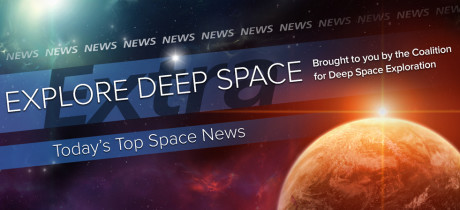In Today’s Deep Space Extra… SpaceX and Boeing warned by NASA of design safety concerns. Japan’s Hayabusa 2 successfully landed on the surface of the asteroid Ryugu late Thursday for a quick sample collection session. An Israeli lunar lander launched from Florida’s Space Coast late Thursday as a secondary payload that includes a NASA technology demonstration. Russia eyes new tourist missions to the International Space Station (ISS).
Human Space Exploration
SpaceX, Boeing design risks threaten new delays for U.S. space program
Coalition Member in the News – Boeing
Reuters.com (2/21): NASA has warned SpaceX and Boeing of design and safety concerns for their competing astronaut launch systems, according to industry sources and a new government report, threatening the U.S. bid to revive its human spaceflight program later this year. NASA is paying SpaceX $2.6 billion and Boeing $4.2 billion to build rocket and capsule launch systems to return astronauts to the International Space Station (ISS) from U.S. soil for the first time since America’s space shuttle program went dark in 2011.
Space Science
Japan’s Hayabusa2 Spacecraft lands on Ryugu asteroid
New York Times (2/21): The Japanese Hayabusa 2 asteroid sample return mission spacecraft succeeded Thursday, U.S. time, in quickly touching the surface of the asteroid Ryugu, to fire a small projectile into the surface and gather up material as it flew up into a sample container. The spacecraft, which arrived at the asteroid last June, then began to climb back to its home position altitude of about 12 miles over Ryugu. Another landing and sample gathering session is planned for the sping. The spacecraft and the material from Ryugu, a primitive solar system body about 186 million miles away is to head back to Earth late this year, returning in December 2020.
Israel launches spacecraft to the Moon
NPR (2/22): With a successful launch late Thursday from Florida’s space coast, Israel is set to join the U.S., Russia and China as the only nations to have landed a spacecraft on the Moon. Israel’s SpaceIL lander, a onetime Google Lunar X-prize competitor, is expected to land in mid-April and will take measurements of the Moon’s magnetic field, while serving as an educational inspiration for Israel’s youth.
With Opportunity lost, NASA confronts the tenuous future of Mars exploration
Smithsonian (2/21): Following decades of continuous flights to Mars, NASA is facing a shortage of missions. Things are changing on Mars. For two decades, NASA has regularly launched missions to the planet, engaging in a sustained effort of robotic exploration. These missions have revealed signs of water, complex organic compounds, volcanic activity and tantalizing hints of possible life—either extinct and gone, or, perhaps, lurking in the subterranean realms of the planet to this very day.
NASA selects experiments for possible lunar flights in 2019
NASA (2/21): The first of a dozen payloads announced by NASA on Thursday could be flying to the Moon by the end of this year. Each of the payloads is dedicated to scientific research or the development of a key technology for future human deep space exploration. They include efforts to better understand the lunar surface composition and radiation, hydrogen and solar power environments. Nine U.S. companies were selected by NASA recently to provide progressively more capable lunar launch services.
Other News
Bezos emphasizes altitude advantage of New Shepard over SpaceShipTwo
SpaceNews.com (2/20): Blue Origin founder Jeff Bezos believes his suborbital passenger launch vehicle, the New Shepherd, can rise higher above the Earth than competitor Virgin Galactic’s SpaceShipTwo. New Shepard test flights have exceeded the 100 kilometer altitude Von Karmen line, a demarcation between the Earth’s atmosphere and space. SpaceShipTwo has powered higher than 80 meters, or 50 miles, which the U.S. Air Force and other government agencies consider as a recognized but easier to achieve boundary. Each has been used to award astronaut wings to astronauts. Bezos was interviewed at a New York City event earlier this week.
Russians say they have a deal with Space Adventures to put tourists in orbit by 2021
Geek Wire (2/19): Roscosmos, the Russian space agency, has signed an agreement with Virginia-based Space Adventures to resume the launches of space tourists to the International Space Station (ISS) on Soyuz spacecraft as soon as late 2021. It’s been a decade since the most recent space tourist Canadian Guy LaLiberte, of Cirque de Soleil fame, launched to the space station on a Soyuz.

